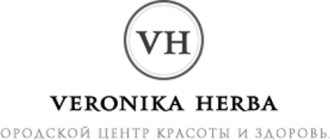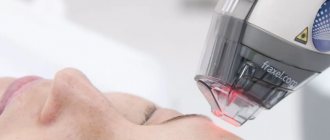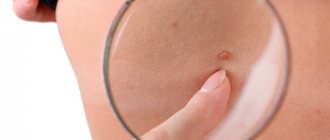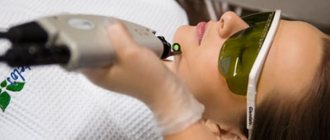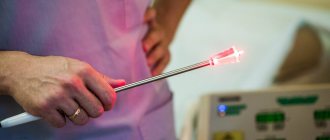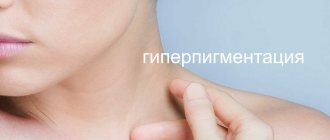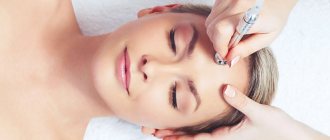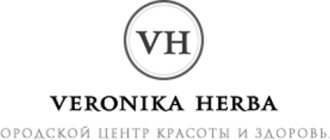New growths on the skin are a serious problem that brings a lot of trouble to patients, and if you do not pay attention to them in time, then also various health complications. If you notice a skin tumor, we advise you to immediately consult a doctor to diagnose the type of tumor and decide on further treatment. Basically, benign tumors on the skin cause a person only cosmetic discomfort, but over time they can become inflamed, grow, and in some cases even degenerate into malignant tumors. People often confuse skin tumors, so you need to consult a dermatologist or a cosmetologist. Types of neoplasms:
Soft fibroids, viral warts Angiomas, nevi (moles) Seborrheic keratomas The most important reason why it is necessary to remove such tumors is to exclude possible malignant degeneration of the formations. |
Types of Cosmetic Lasers
A laser is a device that generates a beam of electromagnetic radiation, infrared or ultraviolet light, and greatly enhances it. The laser beam is characterized by:
- Monochrome (consists only of waves of the same length).
- Uniformity.
- Power intensity and density.
These features give the laser beam a special light power, concentrating photons in a very narrow space. According to their classification, lasers are of the following types:
- Solid-state lasers, which use a crystal matrix having a metal ion component that absorbs and emits photons. These include: Neodymium laser, ruby laser, alexandrite laser.
- Argon laser, CO2 laser, helium neon laser.
- Continuous and pulsed lasers.
Another characteristic for classifying lasers is their method of operation. In this regard, a distinction is made between lasers, which emit a constant beam, and pulsed lasers, which emit repeated pulses of light. Continuous laser light has a gentler effect on body tissue, while pulsed light is more irritating.
Based on emitted power and wavelength, they are divided into:
- Powerful lasers > 500 mW.
- Medium power lasers up to 500 mW.
- Low-power lasers with a power of 1-6 mW.
What does the result depend on?
In many ways, the effectiveness of the intervention is determined by the individual characteristics of the skin of a particular patient. Quite often, the problem of rosacea is observed in people with thin, pale skin, which is characterized by increased sensitivity. In this case, the doctor must take into account not only the nature of the defect, but also the level of sensitivity - most likely, working at a power that involves removing blood vessels will be impossible. The power must be selected so that the patient does not experience discomfort. The procedure may have to be repeated several times (on average, 2-4 procedures are required).
Indications for laser therapy
High-power lasers, also called laser scalpels, are used for invasive procedures (surgery or injections) performed primarily by physicians or, after appropriate training, by estheticians, often in close collaboration with a physician. Laser treatment gives an excellent effect and is successfully used both in traditional medicine and in dermatology, aesthetic medicine or cosmetology. Solid-state lasers include: argon laser, ruby, alexandrite, neodymium, erbium, CO2. In cosmetology, they are used for depilation, removal of skin lesions, tattoos, birthmarks, and photorejuvenation.
Photorejuvenation is a procedure that uses strong light of the appropriate wavelength. Its effect is to stimulate fibroblasts to produce collagen, contract and repair tissue fibers, and increase the supply of oxygen to tissues and nourish the skin. The treated skin is visibly renewed and regenerated thanks to the comprehensive elimination of the symptoms of aging and various types of pigmentation changes.
Low power lasers (soft lasers) and medium power, so-called laser biostimulators, are used in dermatology, cosmetology and rehabilitation. They are used to perform non-invasive procedures due to the therapeutic effect of laser light and tissue biostimulation. These include helium-neon and semiconductor lasers. They are used to remove skin spots and pigmentation, wrinkles, and to treat baldness, acne, ulcers, wounds, scars and keratoses of the skin.
Diode lasers are used, in particular, for hair removal (so-called epilation) and the fight against cellulite. In case of hair removal, selective photothermolysis is used. Necessary in this hair removal method is the presence of pigment in the hair. The best results are obtained in people with fair skin and dark hair. Patients with blond hair may experience significantly worse results. When exposed to laser light, some hairs are removed immediately, while others fall out within a few days due to thermal damage. In the treatment of cellulite, the phenomenon of biological photoinduction is used, which includes deep penetration of the beam into the tissue, which leads to stimulation of cellular respiration and cell oxygenation (oxygen saturation), helping to eliminate swelling.
Effect of different types of lasers
Fractional lasers and IPL devices have become very popular.
Effect of fractional and IPL laser
The Fraxel laser is the latest generation laser that, compared to conventional lasers, allows surgery to be performed in a safer way, with minimal risk of side effects, faster healing and shorter therapy, all with excellent results. The effect of this laser is that the radiation it emits illuminates the skin selectively, and not, as in traditional methods, its entire surface. This is possible thanks to the use of a scanning head, which evenly distributes a microscopic pulsed stream of light waves over the entire surface, which deeply and accurately penetrate the cells of the subcutaneous tissue, as well as the skin itself. The pulses penetrate the skin in the correct sequence (in depth and length) in such a way as to effectively stimulate it to regenerate without causing tissue burns. Thanks to this, the recovery period is significantly reduced and the risk of complications is minimized. Fractional lasers are used mainly for:
- Reducing wrinkles.
- Contractions of small vessels in rosacea skin.
- Reduce spots and pigmentation.
- Removal of all types of scars.
- Removing stretch marks.
- Reduces signs of skin aging.
- To improve the condition of dry and thin skin.
The effect of using laser therapy
IPL (Intense Pulsed Light Source) is a device that is not actually a laser as it emits a wide range of incoherent light waves which due to their different wavelengths are absorbed by certain chromophores in tissues i.e. melanin or hemoglobin . As a result, these tissues are damaged (photothermolysis) without the risk of damage to adjacent tissue structures. IPLs are mainly used for:
- Epilation.
- Removal of blood vessels and redness of the skin.
- Narrowing of pores and normalization of the sebaceous glands.
- Rejuvenation of the skin of the face, neck, décolleté and hands.
- Fight the first signs of aging.
Rejuvenation after laser therapy
Contraindications
Contraindications to the use of laser cosmetology techniques include:
- autoimmune pathological processes, which can only be identified by taking a blood test for the appropriate markers;
- oncological diseases, which is also checked through diagnostic procedures;
- disorders of the cardiovascular system, including arrhythmias;
- pregnancy and lactation;
- diabetes mellitus and other metabolic disorders;
- diseases in a state of exacerbation (acute form);
- some dermatological diseases.
Technique of procedures
Laser light affects the tissue, which leads to the following effects:
- Photochemical - consists of distributing and removing tissue at the site of exposure to short pulses with a high density of rays, does not cause thermal damage to neighboring tissues.
- Photothermal radiation absorbed by the tissue leads to its heating and denaturation.
- In ionizing radiation, the ionization of molecules results in the formation of a plasma, which strongly absorbs the radiation. The plasma spreads, causing a shock wave that leads to tissue destruction.
- Biostimulation. Caused by low power devices. Accompanied by the following phenomena: reflection, dispersion, transmission and partial or complete absorption of the radiation beam.
Depending on the type of treatment and the desired effect, the appropriate wavelength of radiation is selected. It depends on how deep they need to penetrate into the tissue and what result is needed. Similarly with laser power, the more powerful the device, the deeper the beam of rays penetrates. In addition, using higher power will reduce the time the radiation dose is applied.
Laser treatment can be non-contact (the probe does not touch the surface of the skin) or contact (the probe is in contact with the tissue) and, depending on the area of the tissue, point or surface (so-called scanning).
In the case of non-contact methods, the tissue is exposed at a distance, thereby preventing the risk of transmission of pathogenic microorganisms. This is especially important in the presence of infectious wounds, ulcers and eczema. The disadvantage of this method is that almost half of the radiation is reflected from the surface of the tissue and scattered. Because of this, a corresponding increase in radiation dose is required.
The contact technique requires disinfection of the surface of the probe, as well as exposed tissue, and ensures complete penetration of the rays.
The effectiveness of laser therapy mainly depends on whether enough energy is transferred and absorbed to provide the desired therapeutic effect. The power of the laser beam should be selected depending on age, phototype, type of disease and its symptoms, depth of exposed tissue, type and severity of the lesion. The impact occurs in a specific area of tissue at selected points. Laser therapy can also be used in combination therapy in combination with other treatments or pharmacotherapy.
As a result of skin irradiation, you may notice:
- Swelling, redness and burning of the skin. These symptoms disappear within 24 hours.
- Small scabs where there are blood vessels on the surface. Symptoms disappear after about 4 days.
- Pigmentation. When treating freshly tanned skin, it can take up to several weeks to appear.
After laser treatments, you should avoid ultraviolet radiation (sun, tanning), the use of cosmetics and makeup. It is permissible to use only creams and ointments recommended after this type of treatment.
Restrictions
The procedure is considered safe, therefore there are no contraindications to it. There are some restrictions regarding tanning - it is best to prescribe laser treatment for a period of about 2 weeks after the holiday, when the skin has already lightened somewhat.
Immediately after the intervention, it is also important to limit skin contact with the sun - you need to use a day cream with UV filters and avoid beaches and solariums for two weeks.
To sign up for laser treatment in Moscow , contact our managers by phone or email. The center's experienced specialists will help you solve any skin-related problem - our rooms are equipped with the latest technology. Come to our clinic at the address: st. Marshala Rybalko, 2k6, Oktyabrskoye Pole metro station.
Popular questions
1. Is it possible to do a massage immediately after a yellow laser treatment session? I first made an appointment with a cosmetologist, then for a facial massage.
It is better to postpone the massage; touching and rubbing your face after the procedure is contraindicated.
2. How long does the resulting effect last? The laser impressed me, the star on my cheek really disappeared, I want to know how long it will last and whether it is possible to somehow consolidate the result.
In the place where the laser worked, the dilated vessel will no longer appear - after all, the walls of the vessel have stuck together and blood no longer flows through the treated area. However, the reasons for the appearance of dilated capillaries are usually systemic. Therefore, you need to be prepared that a new “star” may appear on some part of the body. After all, we are removing a cosmetic defect, not treating a disease. To achieve long-term remission, it is also necessary to exclude the cause and begin treatment.
